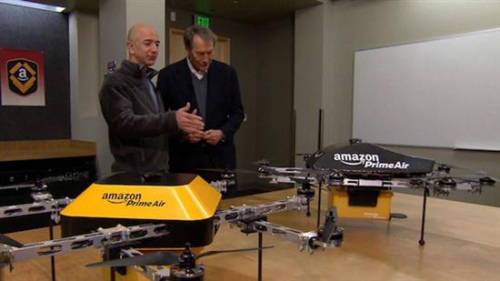

Editor's note: The age of unmanned technology is around the corner as people start to enjoy self-driving cars, unmanned delivery and unmanned aerial vehicles (UAVs). There are still accidents caused by unmanned technology, however. A self-driving car developed by Google crashed into a bus last month during a test drive. When will people actually begin to benefit from unmanned technology?
Accident caused by Google self-driving car

One of Google's self-driving cars crashed into a bus in California on Feb. 14. There were no injuries.
The crash happened when the robotic SUV had to move into the center lane to make a right turn around some sandbags. The accident occurred because both the vehicle and its test driver incorrectly assumed that a bus approaching from behind would slow or stop to let the car through.
It may be the first instance of a Google self-driving car being at fault for an accident. Google said that in the past six years, its cars have been involved in 17 minor accidents over the course of more than two million miles of autonomous and manual driving.
That its software made a decision that led to a crash might be bad news for Google, as the company is devoted to improving its self-driving technology. People also have doubts about self-driving driving technology. Who is to be blamed for this accident? The computer? The company? Or the constantly changing road conditions?
Insurance companies are also reluctant to compensate for accidents caused by small-size drones.

Unmanned technology has been used more than anything with drones so far. The development of drones is more comprehensive than that of self-driving car technology. Drones are widely used in military and civilian industries. Small-size multirotors and reconnaissance UAVs in the U.S. military all belong to drones.
However, risks exist when it comes to small-size drones. Last Christmas, the sales volume of drones saw a rapid increase in the U.K. Nevertheless, insurance companies announced an exception clause, saying they would not compensate for damage caused by drones.
More seriously, drones have been involved in incidents where they nearly collided with passenger aircraft in the U.S., Japan and China.
Police have come up with methods to cope with these risks. Police in the Netherlands train eagles to capture illegal drones in the sky. Japan uses UAVs to deal with illegal drones.
Will people get enjoy unmanned delivery sooner or later?

With the development of unmanned technology, e-commerce has begun exploring unmanned delivery.
Amazon.com was the first to try unmanned delivery. The company has developed a drone, Amazon Prime Air, for delivery. Amazon Prime Air uses multirotor Miniature Unmanned Air Vehicle technology to autonomously fly packages to customers’ doorsteps within 30 minutes of ordering. The drone can also return autonomously.
However, unmanned delivery is restricted by government regulations. Furthermore, drones used for delivery face limitations when it comes to payloads, endurance and weather conditions.
London is currently testing a self-driving truck, but a driver will sit in front of the steering wheel for the sake of safety.
For the time being, delivery of goods bought online still relies on couriers.
Can people become snipers without being trained?

A new rifle, called TrackingPoint rifle, developed by a start-up company in Texas, went on sale in the U.S. in 2013. Its unique feature is that it uses lasers and computers to make shooters exceptionally accurate.
Experts said that the new gun, which aims automatically, cannot shoot with great accuracy in actual combat, and is not a substitute for a human shooter, as 32 different elements can affect accuracy of shooting, including air pressure, temperature and altitude. The automated system cannot cope with multiple elements at one time.
 China has world's largest high-speed rail network
China has world's largest high-speed rail network Top beauties in Chinese provinces
Top beauties in Chinese provinces 600 people attend Lusheng playing contest in S China
600 people attend Lusheng playing contest in S China Engineer troop builds bridge in real combat conditions
Engineer troop builds bridge in real combat conditions You can urinate in public in Chongqing
You can urinate in public in Chongqing Rice terrace scenery in southwest China's Yunnan
Rice terrace scenery in southwest China's Yunnan 2016 Miss Chinatown USA pageant held in San Francisco
2016 Miss Chinatown USA pageant held in San Francisco Ancient pagodas across China
Ancient pagodas across China Wedding dress show up in the air
Wedding dress show up in the air Top 20 hottest women in the world in 2014
Top 20 hottest women in the world in 2014 Top 10 hardest languages to learn
Top 10 hardest languages to learn 10 Chinese female stars with most beautiful faces
10 Chinese female stars with most beautiful faces China’s Top 10 Unique Bridges, Highways and Roads
China’s Top 10 Unique Bridges, Highways and Roads Foreign investment in SOEs welcome: MOFCOM
Foreign investment in SOEs welcome: MOFCOM China adopts pop songs, rock to instill patriotism in youth
China adopts pop songs, rock to instill patriotism in youth No more ship-grounding tricks allowed in South China Sea
No more ship-grounding tricks allowed in South China Sea What it takes to be a real Beijing expat – according to the old hands themselves
What it takes to be a real Beijing expat – according to the old hands themselvesDay|Week